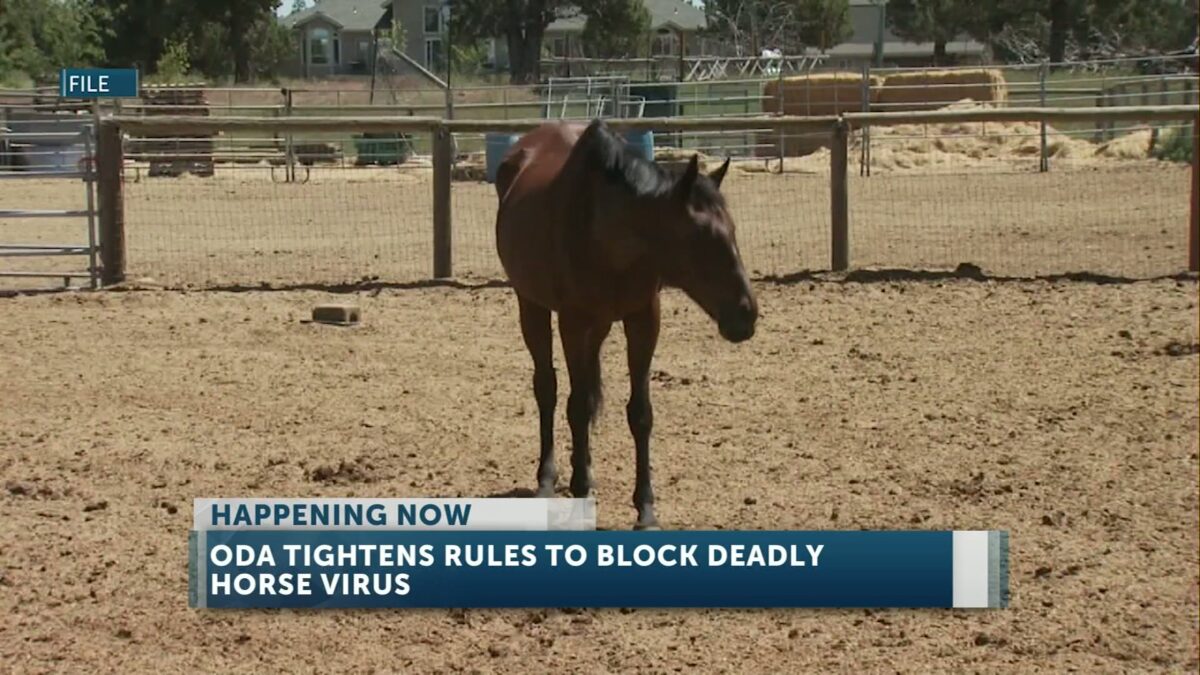Oregon Department of Agriculture issues temporary rules to help prevent the spread of equine herpesvirus

KTVZ
SALEM, Ore. (KTVZ) — The Oregon Department of Agriculture announced Friday it has issued temporary rules to help reduce the risk of spreading Equine Herpes Virus (EHV)/Equine Herpes Myeloencephalopathy.
The rules filed on Wednesday “will immediately strengthen Oregon’s ability to prevent the entry and spread of EHV/EHM by requiring additional safeguards for horses entering the state or attending high-risk events,” ODA said in a news release that continues in full below:
ODA was recently made aware of an outbreak of EHV/EHM in horses that were at or associated with barrel racing and rodeo-type events in Texas and Oklahoma. Several cases of EHV/EHM have been confirmed in Texas and Oklahoma associated with these equine events, with numerous reports of additional cases and equine deaths pending investigation.
Oregon currently has no confirmed cases of EHV/EHM. ODA is coordinating with the affected states to quarantine any horses that have returned to Oregon after being exposed at the Texas and Oklahoma events.
Rules Overview
All exhibitions where equines will be present must register with ODA at least 20 days before the event.
Specific records must be collected at the time of entry.
At least one designated veterinarian is involved in planning the exhibition and is available to provide care.
Each exhibition where equines are present must have a designated isolation area.
Exhibition requirements and registration: ODA Animal Health Website
Filed rules are online at: Rulemaking at ODA
Equine Herpes Virus Information:
EHV‐1 is spread from horse to horse through contact with nasal discharge or spread as aerosol droplets. Infected horses may not show clinical signs of the virus but may still act as carriers.
Horses can also contract the virus by coming into contact with contaminated surfaces such as stalls, water, feed, tack, and transport vehicles. People can spread the virus from horse to horse through contaminated hands and clothing.
Owners should watch for signs and symptoms and practice biosecurity measures. Good biosecurity practices include thorough cleaning and disinfection of surfaces and equipment that come into contact with affected horses, and individuals who treat or come into contact with infected horses must follow appropriate disinfection protocols when handling multiple horses.
Additional information and resources:
A Guide to Understanding the Neurologic Form of EHV Infection
AAEP General Biosecurity Guidelines
CDFA – AHFSS – AHB – Biosecurity Toolkit for Equine Events